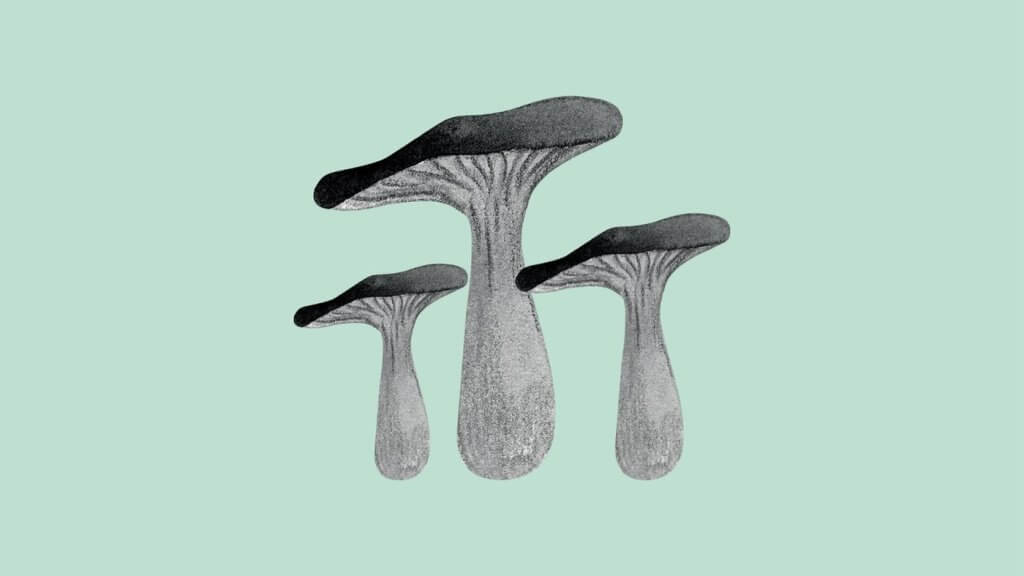Lactarius indigo, known as milk cap mushrooms, are edible fungi that grow in oak and pine woods. You will mostly be surprised by its indigo blue hue if you've never seen this curious edible mushroom before.
Can You Eat Indigo Milk Caps?
This interesting blue milk mushroom is safe to eat.
This fact might be surprising since indigo milk cap mushrooms look better suited to a Sci-fi movie than a dark green, coniferous forest.
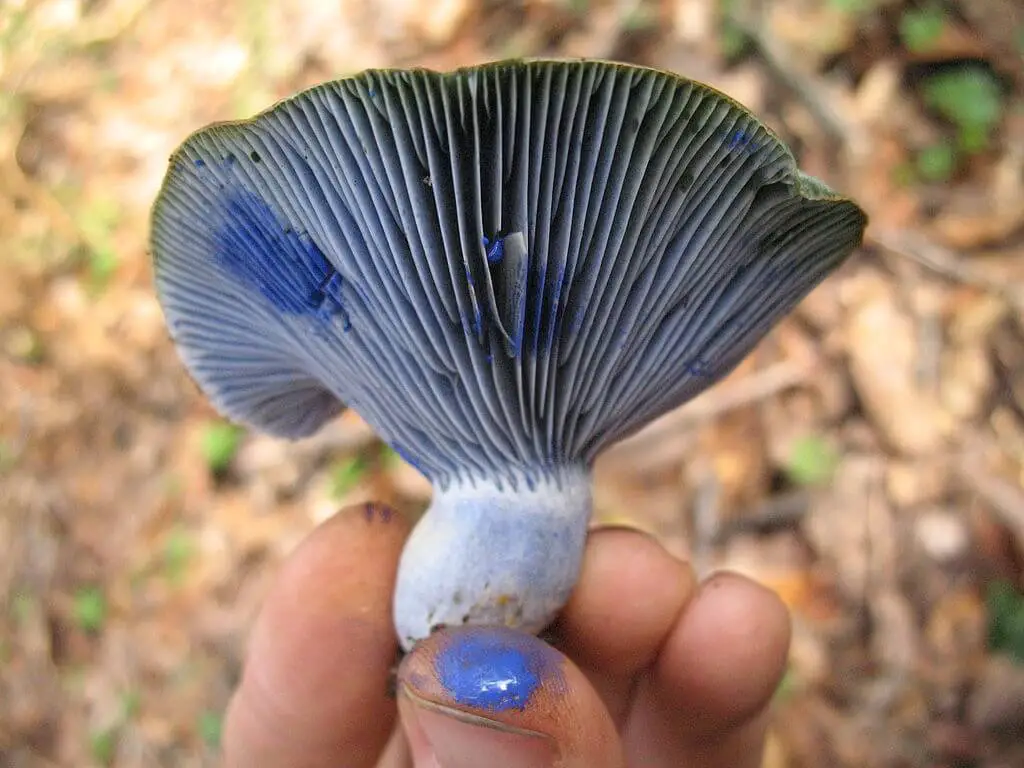
Can You Eat Indigo Milk Caps Raw?
Whenever you trek through a lush pine forest, you’re sure to find a plethora of edible wild mushrooms.
What Are You Foraging For Right Now?
We're thrilled to hear your ideas. What would you like to submit today? Feel free to share your thoughts and experiences with us.
Even though these edible blue mushrooms are rare, the indigo milk cap is edible; however, it must be cooked before consumption. All edible wild fungi have to be cooked when foraged.
Beware, though; these wild mushrooms will likely stain your utensils, pans, and crockery green when cooking.
If you plan to scramble these wild mushrooms with eggs, you may end up with green eggs. (Well, the children might love that).

Are There Any Poisonous Look-Alikes?
The beginner forager can mistake other blue or purple species of poisonous Cortinarius for the edible Lactarius indigo. Whether you find greyish blue, dark blue, or bright blue mushrooms, you’ll need to know how to spot the poisonous from the edible ones.
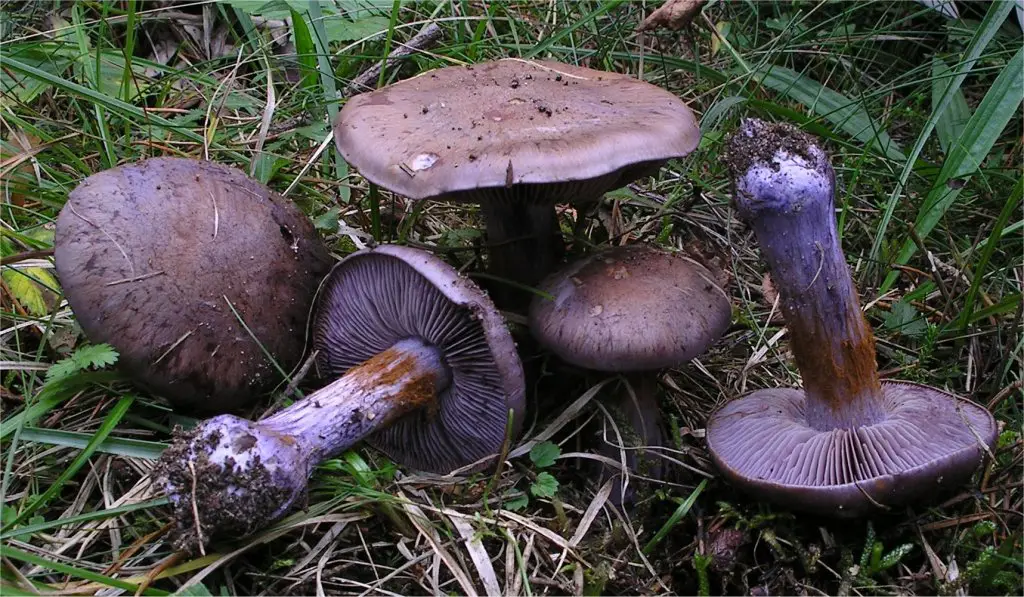
To differentiate Cortinarius mushrooms and Lactarius indigo apart:
- Check for differences in the spore print. Cortinarius mushrooms have a spore print that is rusty-brown in color.
- When cut or scrapes, indigo milk caps let off a bright blue latex. In contrast, Cortinarius do not emit any blue latex when you cut or scrape them.
- Look at the color. Varieties of the potentially life-threatening Cortinarius may appear alike in color, but they are usually more purple-ish and lack the striking bright blue of Lactarius indigo.
- Check for a web-like veil over the gills. Unlike the dangerous Cortinarius wild mushrooms, indigo milk caps will never have this veil.
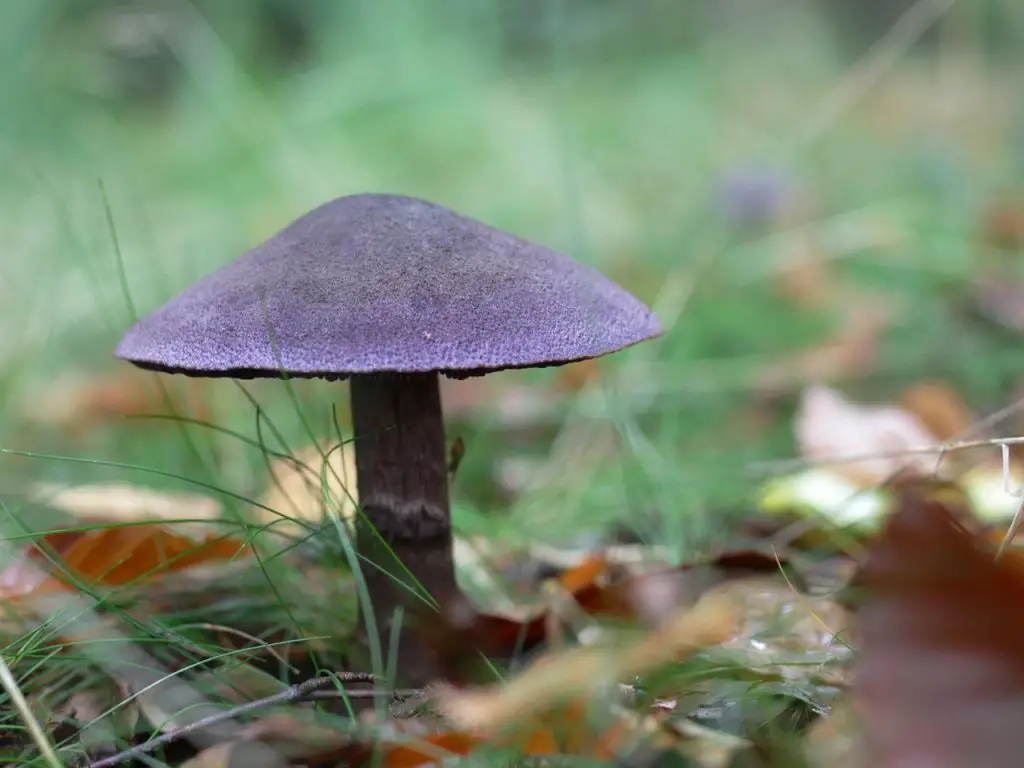
What Do Indigo Milk Caps Taste Like?
Unlike most other edible mushrooms, the indigo milk caps mushroom’s taste typically varies depending on the subspecies.
Why would the same species of Lactarius indigo have different flavors?
This is probably due to the different subspecies traits these blue mushrooms possess. Another possible reason is the impact of the tree species and surrounding soil of the forests that these wild mushrooms call home.
In most cases, indigo milk caps are found to be mild, nutty, and sweet with a hint of black pepper. Sometimes, the peppery flavor can be on the strong side.
Some believe the Lactarius indigo mushroom is similar in taste to the portobello mushroom when appropriately cooked, although with a slightly grainier texture.
Where Can You Find Indigo Milk Caps?
It’s a good job that indigo milk cap mushrooms are striking and easy to spot because they are one of the rarest wild mushrooms worldwide.
Indigo milk caps grow in the eastern U.S., but can be found in a few of the states in the Pacific Northwest as well.
They can be commonly seen around Northern California, Oregon, and Washington state.
Whether bright blue or silvery-blue in color, it often grows in mixed forests, oak and pine woods, and mature hardwood.
You might see the blue Lactarius indigo growing symbiotic with hardwood trees, most often beech and oak. However, indigo blue wild mushrooms have also been known to lurk in other areas’ green, coniferous forests.
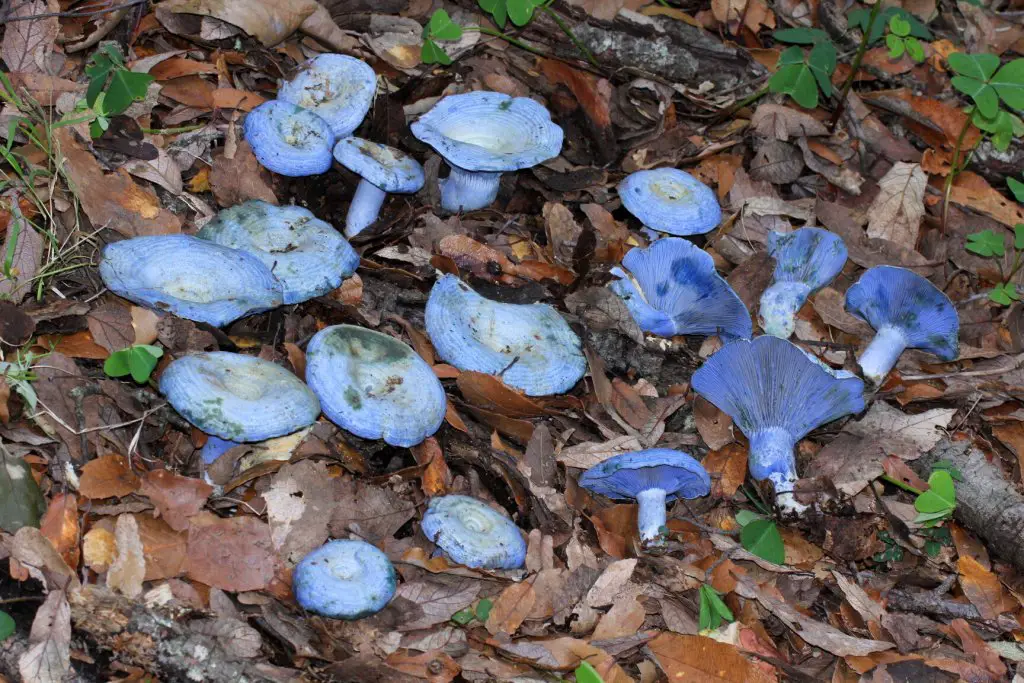
Foraging Indigo Milk Caps: Useful Tips
- Firstly, look at the stem. You’ll see that bugs have more than likely visited this indigo milk cap before you have.
- You should cut off and discard the stems if you don’t want to pass on these mushrooms.
- Timing is also crucial when foraging indigo milk caps. Leaving it a day or two late can make the difference between mushrooms that make up a tasty meal and mushrooms that end up in the compost.
Indigo Milk Caps: Any Other Uses?
These dark blue wild mushrooms from the family Russulaceae are not only edible and beautiful, but they come with a few other benefits and uses.
Indigo milk caps have their uses as a fluorescent or textile dye. Also, this dye is being investigated for potential medicinal purposes.
Research has shown that indigo milk cap mushrooms have anti-microbial properties and can inhibit the growth of specific cancerous cells, although these were only in vitro studies.
It’s unclear whether Lactarius indigo could be a safe and effective medicine for animals or humans or whether eating the indigo milk caps themselves has medicinal benefits.
But at the very least, they’re tasty and free!
Getting into the great, wet outdoors in search of edible plants, herbs, fruits and fungi is one of Sarah’s favorite outdoor pursuits. She thinks there’s nothing better than combining her passion for hiking with the start of the foraging season. Sarah’s definitely not afraid of a little rain and dirt, it’s all part of the fun.

